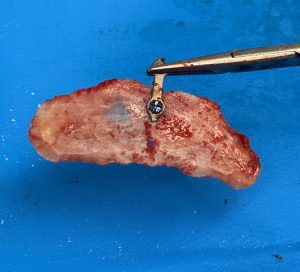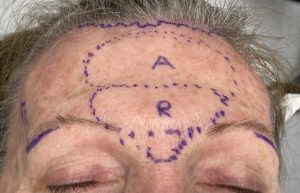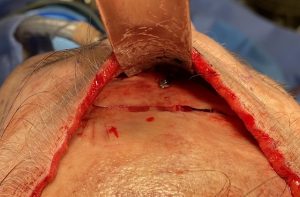Significant brow bone reduction requires more than a burring technique. The thickness of the bone over the frontal sinus is too thin to permit more than a few millimeters of brow bone reduction. A bone flap setback technique is the definitive brow bone reduction method. By removing the entire bone cover over the frontal sinus it can be shaped and set back in after the perimeter has been similarly reduced. Reductions of 5 to 7mms or more are then obtainable.
To fully visualize the brow bones for the surgery the traditional access required is a full coronal scalp incision. This allows all the soft tissues of the forehead to be lifted off and the bottom side of the brow bones directly visualized. In this manner the bone cuts around the perimeter of the brow bone can be clearly seen and made.




While many believe the reshaping of the bone flap is what creates much of the setback effect, it only makes a partial contribution to the final contour reduction. Once the bone flap is removed the perimeter of the surrounding frontal bone is reduced including the high radix of the nose. To get the bone flap to setback into the reduced perimeter the septum between the paired frontal sinuses must also be reduced.

The window technique in brow bone reduction allows for a smaller superior scalp incision to be used and avoids placing it in the temporal region where widening of it almost always occurs. With careful technique the same brow bone and more complete forehead reshaping can be done as with a turndown forehead flap.
Dr. Barry Eppley
Indianapolis, Indiana







